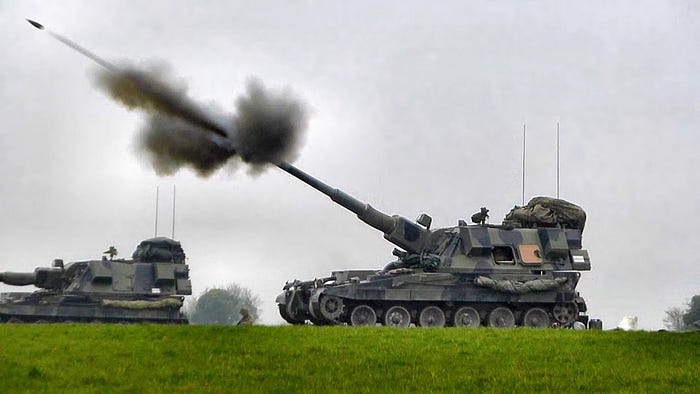Evolution of Artillery Tactics: Mastering the Shoot and Scoot Maneuver

The “shoot and scoot” tactic in artillery is a method of engaging targets and then quickly relocating to avoid enemy counter-fire. This approach balances the benefits of firing multiple rounds from a single location, which can provide a higher rate of fire and improved accuracy, against the risks of being located and targeted by the enemy. The tactic is especially relevant in modern warfare due to advancements in counter-detection technologies, such as radar.
Historically, the shoot and scoot tactic has roots dating back to the 19th century. During the Caucasian War, Chechen Naib Talkhig of Shali was noted for his implementation of these tactics, termed “nomadic artillery” by Russians, in the 1830–1850s. This marks one of the first recorded uses of the tactic. In World War II, the need for such tactics became evident due to the visible smoke signatures from anti-tank and rocket launchers, which made stationary artillery vulnerable to enemy fire. The Soviet Katyusha rocket artillery, with its light and mobile design, also effectively utilized this approach.
In the context of NATO, shoot and scoot tactics were first adopted in the early 1960s by nuclear artillery units. These units, equipped with towed howitzers and truck-mounted rockets, would fire and immediately relocate to a new position. This method was later seen in the Gulf War, used by Iraqi missile units.
The effectiveness of the shoot and scoot tactic has been enhanced with the advent of self-propelled artillery. Systems like the M270 Multiple Launch Rocket System and the PzH2000 self-propelled gun have adopted similar tactics, increasing their survivability on the battlefield. A refined version of this tactic involves maneuvering gun areas, as developed by the UK for use by AS-90 batteries when facing a high counter-battery threat.
Analytically, the shoot and scoot tactic has been examined using stochastic models like continuous-time Markov chains. This analysis highlights a balance between the duration of firing at one location and the frequency of moving to new positions. While staying longer in one location allows for more effective firing at the enemy, it also increases the risk of detection. Hence, commanders must weigh the risk level and their unit’s capabilities to determine the optimal frequency of repositioning.
Overall, the shoot and scoot tactic represents a crucial evolution in artillery tactics, emphasizing mobility and responsiveness to enhance survivability and effectiveness in modern warfare.








